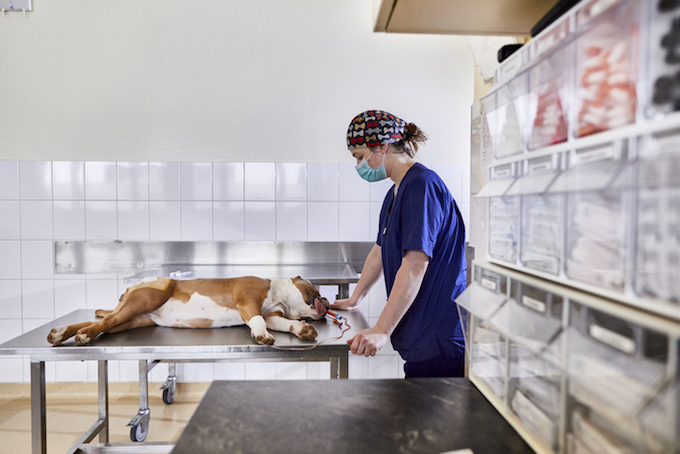Excess carbon dioxide in dogs happens when there is too much carbon dioxide in the blood. This causes respiratory problems.
The condition causes a range of symptoms. For example, hypoventilation and respiratory acidosis are two common ones. Unfortunately, the condition can be fatal if not treated quickly.
Technically, the condition is known as hypercapnia.
If you see the signs of excess carbon dioxide in the blood in your dog, then get to a veterinarian for a proper diagnosis and treatment.
Here’s what you should know about the symptoms, causes, and treatments for the condition.
Symptoms of Excess Carbon Dioxide in Dogs
The condition produces a range of symptoms. Generally, they affect the nervous system.
For example, common symptoms of the condition include:
- Acting weak and lethargic
- Abnormal breathing
- Feeling dizzy
- High blood pressure
- Hypoventilation
- Irregular heartbeat
- Losing consciousness
- Coma
Causes of Excess Carbon Dioxide in Dogs

There are a surprisingly wide range of causes of the condition. For instance, some of the most common include:
- Infection
- Dehydration
- Airways being restricted
- Restricted chest movement
- Shock
- Overdose of medicine
- Trauma
- Central nervous system issues
- Undergoing anesthesia
Treatments for Excess Carbon Dioxide in Dogs
Firstly, the condition can take a while to diagnose. This is because your vet will need to rule out a range of other condition first.
Secondly, your vet will carry out a physical examination of your dog. Blood and urine tests will be taken.
The subsequent results of these tests will be used to rule out other conditions. Kidney problems and infections are examples of these.
Additionally, x-rays and ultrasounds can confirm the condition.
Ultimately, treatment involves making sure your dog can breathe properly. Your dog will be put on a ventilator for this.
Accordingly, further treatment will focus on treating the underlying cause. For example, intravenous fluids can be used for dehydration. Your vet can also remove any objects obstructing the airways.
Thankfully, recovering from the condition is good. Although always contact your vet if you see symptoms of the condition. This is because early treatment is key.
Additionally, make sure your dog has a quiet and calm space at home to recover in.
Have you ever cared for a dog who suffered from this condition? How did your vet help your dog recover? Let us know in the comments section below.








